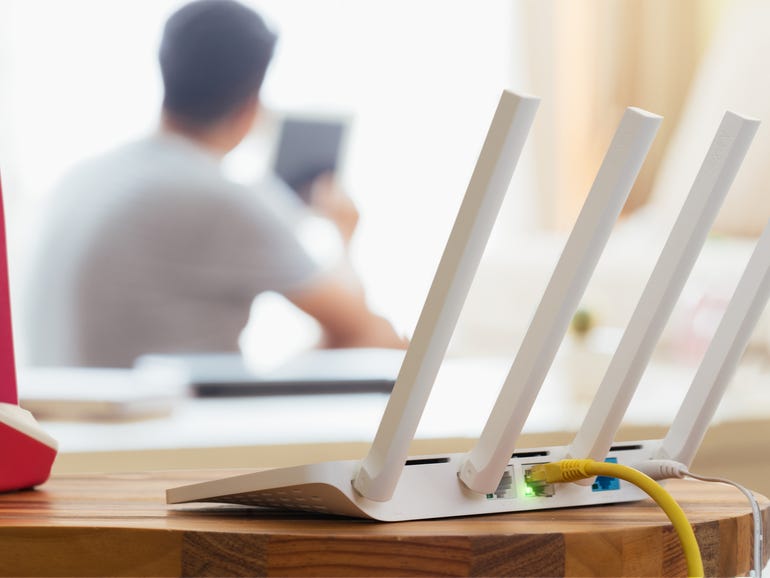
When I started networking, 300 bits per second (BPS) was the best you could do from home and our brand new 802.3 Ethernet gave us a big 10 Megabits per second (MBPS) at the office. I wanted more. Today, with cable gigabit to my home office and 2 Gigabit per second (GBPS) in my office. I still want more. Everyone wants faster, better networking. In 2022, we’ll get what we want.
First, 5G is finally going to actually make a difference. To date, most of what we’ve been getting is 5G hype. You see 5G has three major different network approaches. Only one of these — millimeter-wave (mmWave) — can give you gigabit speeds. But, and it’s a big but, mmWave, which Verizon calls 5G Ultra-Wideband, has a range that’s better measured in feet instead of yards and it can be blocked by ordinary window glass. In short, you can forget about getting gigabit speeds for all practical purposes.
So, why is Verizon advertising it has 5G everywhere? Because it offers another 5G approach: Dynamic Spectrum Sharing (DSS). Verizon 5G DSS performance is the same as you’ve already been getting from Verizon 4G LTE. In short, it’s a pure advertising gimmick with no real speed advantage.
DSS does, however, deliver much better latency than 4G LTE. As more and more 4G phones are replaced with 5G models, DSS-based 5G will start delivering more speed. It will never be gigabit speeds, but it will be better than old-style 4G.
However, 4G is also getting a speed boost. Verizon is using a new frequency range, Citizen Band Radio Service (CBRS)–which has nothing to do with the CB radio of truckers and Burt Reynolds movies–can increase 4G speeds up to 800 Megabits per second (Mbps). So, don’t be in too much of a hurry to move to 5G. 4G may work better for you in 2022.
Another 5G technology, mid-band, is another story. This one, which today is mostly deployed by T-Mobile, has an average speed of 162 Mbps. Now that doesn’t sound fast, but that’s only because you’ve been drinking 5G marketing kool-aid. It’s the fastest average 5G internet in the US today.
The real reason why T-Mobile’s mid-band 5G matters isn’t so much its speed as its range. Instead of feet or yards, it has a range in miles. This makes it ideal for bringing broadband to users who don’t live in cities. If you live in the country, T-Mobile is probably your best choice for your smartphone, office, and home. With 41% 5G coverage of the country, T-Mobile out-distances its 5G rivals.
Another big advance is that while some of us are lucky enough to live in places with fast broadband, many of us are still stuck with DSL or even–shudder–dial-up internet connections, things are finally changing for the better. Jessica Rosenworcel, a net neutrality proponent, is now the Federal Communications Commission (FCC) Chair.
What’s even more important is that Congress passed President Joe Biden’s Infrastructure Investment and Jobs Act. This act included more than $65 billion to build out broadband networks and make broadband more affordable. How this will be spent depends on each state, but the bottom line is it will end up paying to get broadband deployed to places that have never dreamed of seeing real internet speed.
Some of that money will be spent on broadband that doesn’t need new, expensive cable buildouts. Instead, it will go to Low-Earth Orbit (LEO) satellites such as SpaceX’s Starlink.
Starlink is finally moving from beta to production. While Starlink isn’t as fast as the top cable or fiber networks, it’s still much faster than most rural users have ever seen.
For all the buzz Starlink has generated, keep two things in mind. First, Starlink terminal production has gone much slower than originally planned. For example, I’ve been on the waitlist for nine months now and I was recently told I can’t expect to see my unit until some time in the summer of 2022. If you were to order one today, you can expect to wait until the end of 2022 or early 2023. Ouch!
Another problem is that because of the demand, Starlink’s average download speed has declined from 97.23 Mbps during Q2 2021 to 87.25 Mbps in Q3 2021. That’s still a lot faster than what my friends and family currently get back in Calhoun County WV and other rural areas, but it’s still a disturbing trend.
Finally, if you’re still using 3G, and I know some of you are, get ready for your old phones to stop working. All the major cell companies are turning off their 3G services. AT&T is shutting down its 3G services in February 2022; T-Mobile flips the switch on March 31, 2022; and Verizon will hold off the longest and pull the plug in December 2022.
All-in-all, next year should see most of us get faster internet no matter where we live or what services we use. We’ll still want more, of course, we always do, but 2022 will still be a good one for internet users.























